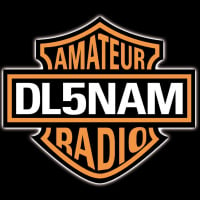Welcome to the FlexRadio Community! Please review the new Community Rules and other important new Community information on the Message Board.
Need the latest SmartSDR or 4O3A Genius Product Software?
SmartSDR v4.1.3 | SmartSDR v4.1.3 Release Notes
SmartSDR v3.10.15 | SmartSDR v3.10.15 Release Notes
The latest 4O3A Genius Product Software and Firmware
SmartSDR v4.1.3 | SmartSDR v4.1.3 Release Notes
SmartSDR v3.10.15 | SmartSDR v3.10.15 Release Notes
The latest 4O3A Genius Product Software and Firmware
If you are having a problem, please refer to the product documentation or check the Help Center for known solutions.
Need technical support from FlexRadio? It's as simple as Creating a HelpDesk ticket.
Need technical support from FlexRadio? It's as simple as Creating a HelpDesk ticket.
SmartSDR V2 and WSJTx setup video

Mike-VA3MW
Administrator, FlexRadio Employee, Community Manager, Super Elmer, Moderator admin
All
This video was just uploaded to help with the initial setup of WSJTx V1.9 and SmartSDR V2.
Mike va3mw
This video was just uploaded to help with the initial setup of WSJTx V1.9 and SmartSDR V2.
Mike va3mw
5
Comments
-
Well done Mike, many thanks for taking the time to put this together. K4IU0
-
Mike what SSDR version you using in video?
0 -
Looks like 2.3 Alpha, which was shown at Dayton.0
-
Did anyone record the talk at Dayton? I could not make it this year.0
-
Hi,
Just a note for anyone who encountered what I did
when I upgraded from 1.8 to 1.9.
My drop-down window for choosing the different bands
were blank. If I chose a band manually, it would show
the band in the drop-down window and the freq in the
in the dial frequency window.
I uninstalled and re-installed several times. Downgrade
to 1.8 and the band choices were back. The only fix
I found was not only, uninstall, but go into the users
folder on Windows and remove WSJT from there also.
I re-installed WSJT 1.9 and, presto, all functions
were there.
Not sure if I am the only one who encountered this,
but this is what worked for me.
73, Jim N9VC
0 -
Go to wsjt-x Settings / Frequencies, then right click on the frequency list and chooes "Reset" from the context menu, et voila, all the default frequencies will [re]appear.0
-
Which one? The banquets? I don't think so. You should attend next year. It's very nice to meet up with the folks.0
-
Wonderful video, OM. With a few collywobbles, it got my WSJT-X set up, although I haven't been able to test it much on the air because I did it early in the morning when there were no signals to be had. To get it going I had to put in "localhost:###," not just the number for the network location. It worked though; passed the PTT test and so forth. This community sure is chock-ful of helpful folks. Hope I can be one of them one day. Thanks again de Roger W6VZV0
-
Thank you so much for the wonderful information. All this time I have been saying that this program would not work with 6.**** as the selected radio. I was wrong!
I had one slight hitch. When I selected Flex 6.**** my network server entry had no defaults showing. I had to manually enter the I/P address of my computer after doing a network scan of the clients. It still failed when I selected 192.1.168.131:5002. I am not using DDUTIL. However once I added 5003 as an additional CAT port it worked perfectly. Thank you for going to all that trouble. Well done!
Jim, K6QE
0 -
Thanks,Ted. I wish I had known that, would have saved the rut in the side of my head.
73, Jim N9VC
0 -
Mike, thanks so much for the excellent video. I had my FT8 set up using VOX instead of PTT because I couldn't make PTT work with the old WSJT-X version. Your video cured that. As per your suggestion, I downloaded the latest version of WSJT-X 1.9.1. I should note that I did not download the latest version of JTAlert-X, still everything worked properly, including automatically logging to HDR, except I kept getting a pop up "Cat server Send error". The error pointed to DDUTIL. On a lark, I updated to the latest version of JTAlert-X version 2.11.3 and the CAT error message went away. So I would recommend that everyone update both WSJT-X and JTAlert-X at the same time. Many tanks.
0 -
For what it’s worth - you don’t need to add an extra port for PTT, although it certainly doesn’t hurt. You can do PTT via CAT command and it works fine.1
-
That makes sense.0
-
I was just wondering if anyone video recorded any of the Banquets? I plan on making it next year but would love to see and hear what I missed this year.
0 -
I did have one question. On the video, the OM inputs "5003" (I believe it was) for rig control. When I did it, both when my rig was connected to the computer and later, to the network hub, it would not work for me unless I input "Localhost:5003". Just the number would not do it for me. Can anyone explain this?0
-
It wasn’t recorded. You missed out! They did unveil zoom to band and spots in the panadapter. Gerald also gave a history lesson on flex0
-
WOW Zoom & Spots!!! Can't Wait!
0 -
Great Video Mike! May I add you should open up your TX filter "Low" and "High" cut to allow you to tx anywhere within your selected receive bandwidth.
Cal/N3CAL
0 -
The "Network Server:" box in WSJT-X is expecting a TCP IP address and a port number. So port number alone is not sufficient. Using "localhost" will allow the network stack resolve the loopback IP for you. Other people use 127.0.0.1 for the IP address, which also works because it is the loopback adapter IP address for the computer, which is common on all OSes.0
-
Understood. I was just curious how, in the video, it was that Mike just enters 5503 and it works. Shouldn't it have been localhost:5503? Took me half and hour to figure out I needed to add "localhost" LOL.0
-
TNX for the video Mike. The more of them the better. They really do meet a need.
In the future please post (or repost) them in higher resolution. On this conventional desktop (at least) it is very hard to read the details of the small images. When I try to go full screen I get FULL SCREEN IS UNAVAILABLE trying several different browers. -Dave.
0 -
Hi Dave
I have to consider all users, so it is done in 720P exactly. 1280 x 720.
Not everyone has the higher resolutions. If you go to the actual youtube video, you can see it full screen. Just click the YouTube symbole
Mike0 -
If you go to the actual youtube video, you can see it full screen. Just click the YouTube symboleGreat! I learned something new today...0
-
Deep under the cover in Windows (and all operating systems) there is a file called 'hosts'. http://www.thewindowsclub.com/hosts-file-in-windows When your operating system needs to take a name and find the IP address, it looks at the hosts file first and then it goes to the Domain Name Servers you have set up for your Network card.
You can test this by bringing up a command prompt and doing an
nslookup localhost
C:Users840G1>nslookup localhost
Server: UnKnown
Address: 10.2.0.10
Non-authoritative answer:
Name: localhost.homeip.net
Address: 127.0.0.1
In that file will be a lookup table that says the localhost is the same as 127.0.0.1. 127.0.0.1 is the default IP address for the actual 'host' or the computer you are working on.
You can actually add your own names if you wish to the hosts file. You could say my computer name is "fredflinstone 127.0.0.1" and get the same result.
The structure for this entry can be either:
127.0.0.1:5003
or
localhost:5003
Where it is "ip address" or "host name" : port number
The Colon is critical too.
There are many ways to solve this. I tried to give you the most fool proof one.
Mike
1
Leave a Comment
Categories
- All Categories
- 378 Community Topics
- 2.1K New Ideas
- 630 The Flea Market
- 8.2K Software
- 118 SmartSDR+
- 6.4K SmartSDR for Windows
- 183 SmartSDR for Maestro and M models
- 430 SmartSDR for Mac
- 271 SmartSDR for iOS
- 258 SmartSDR CAT
- 192 DAX
- 382 SmartSDR API
- 9.3K Radios and Accessories
- 38 Aurora
- 256 FLEX-8000 Signature Series
- 7.2K FLEX-6000 Signature Series
- 947 Maestro
- 56 FlexControl
- 865 FLEX Series (Legacy) Radios
- 924 Genius Products
- 463 Power Genius XL Amplifier
- 336 Tuner Genius XL
- 125 Antenna Genius
- 297 Shack Infrastructure
- 209 Networking
- 460 Remote Operation (SmartLink)
- 144 Contesting
- 787 Peripherals & Station Integration
- 139 Amateur Radio Interests
- 1K Third-Party Software
 https://www.youtube.com/watch?v=vxageEY7-Pw
https://www.youtube.com/watch?v=vxageEY7-Pw




